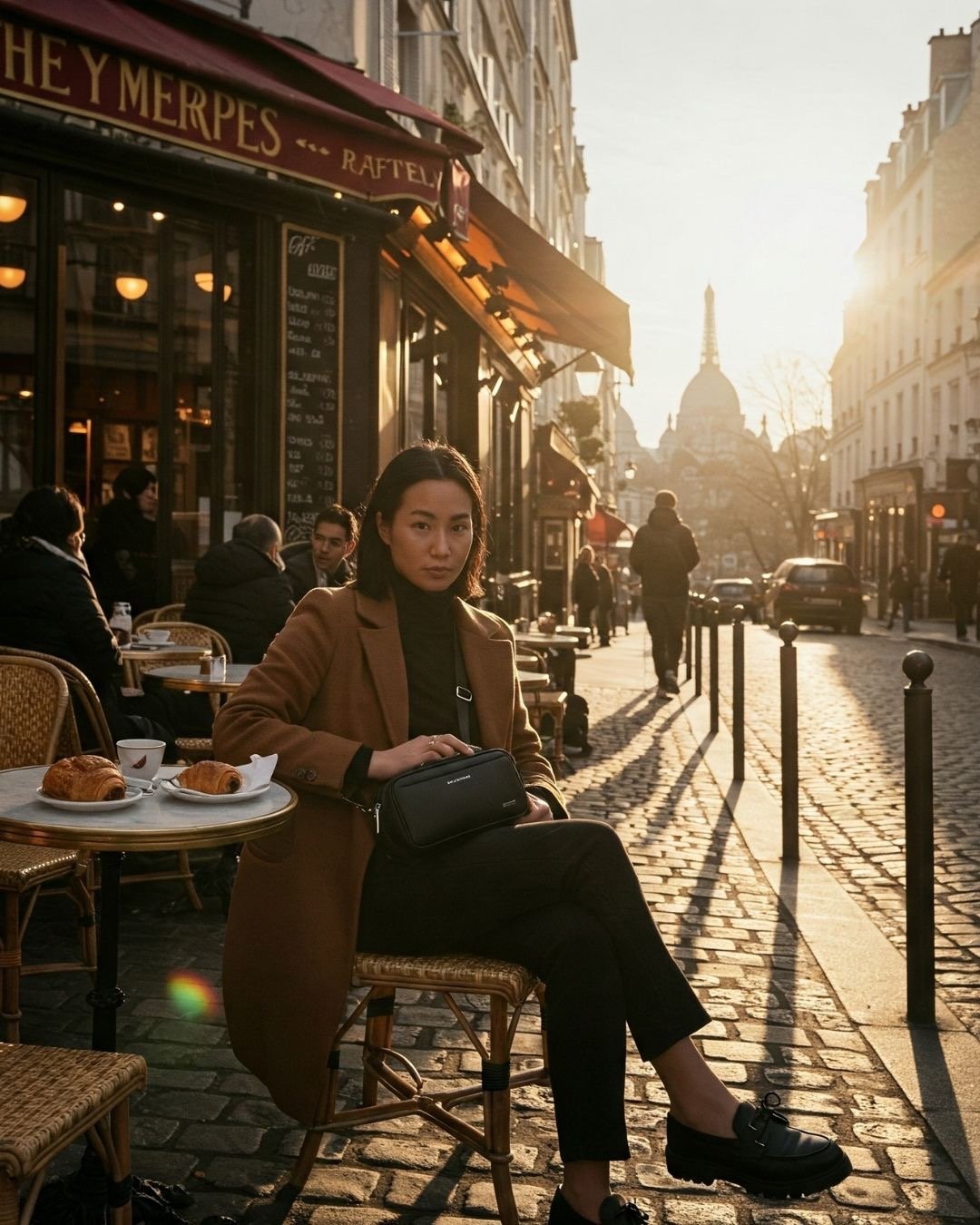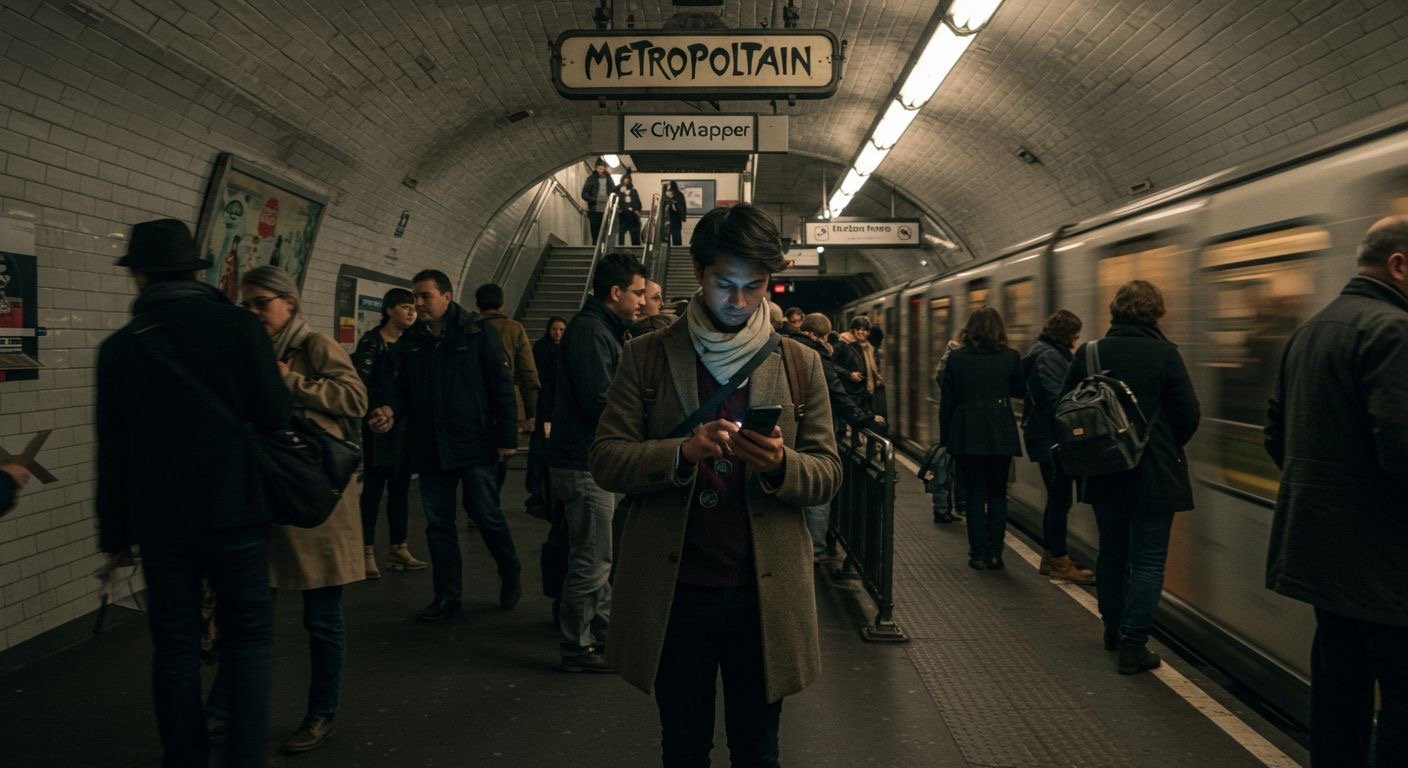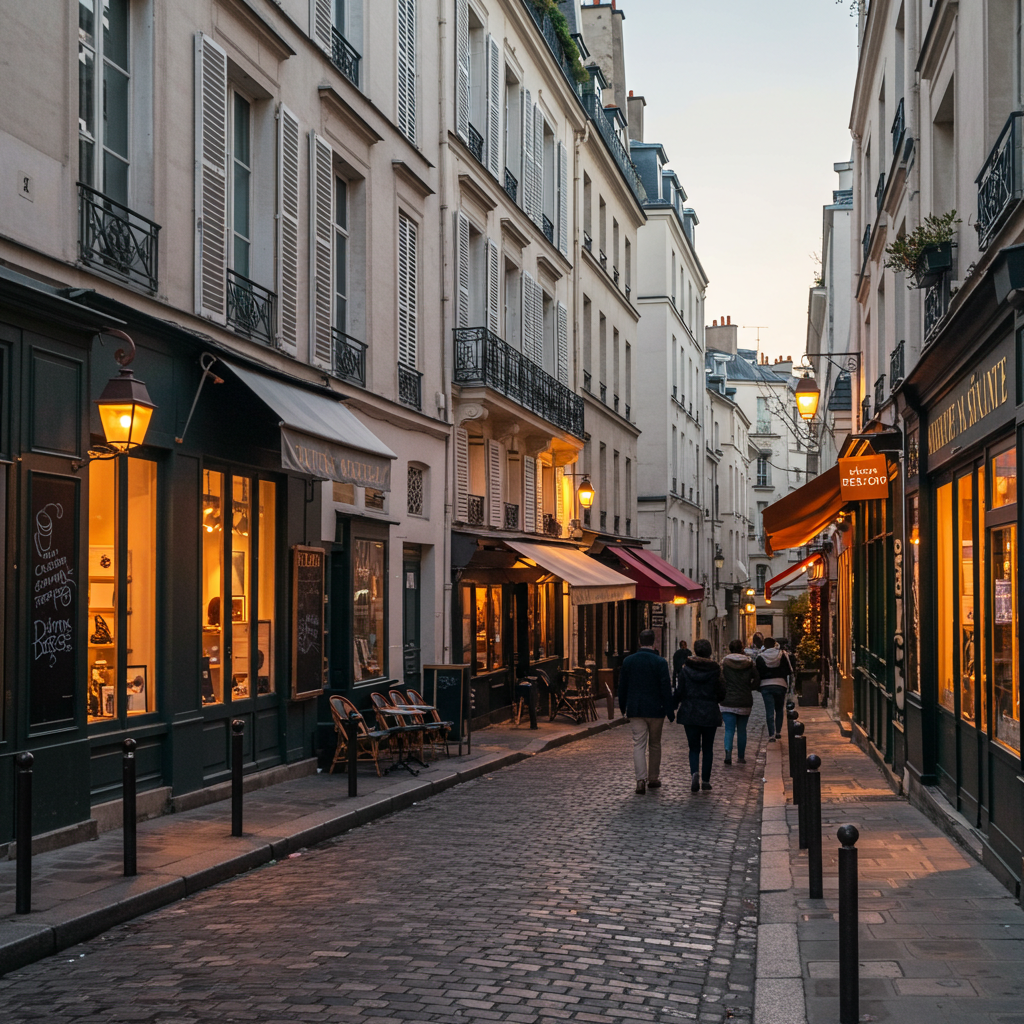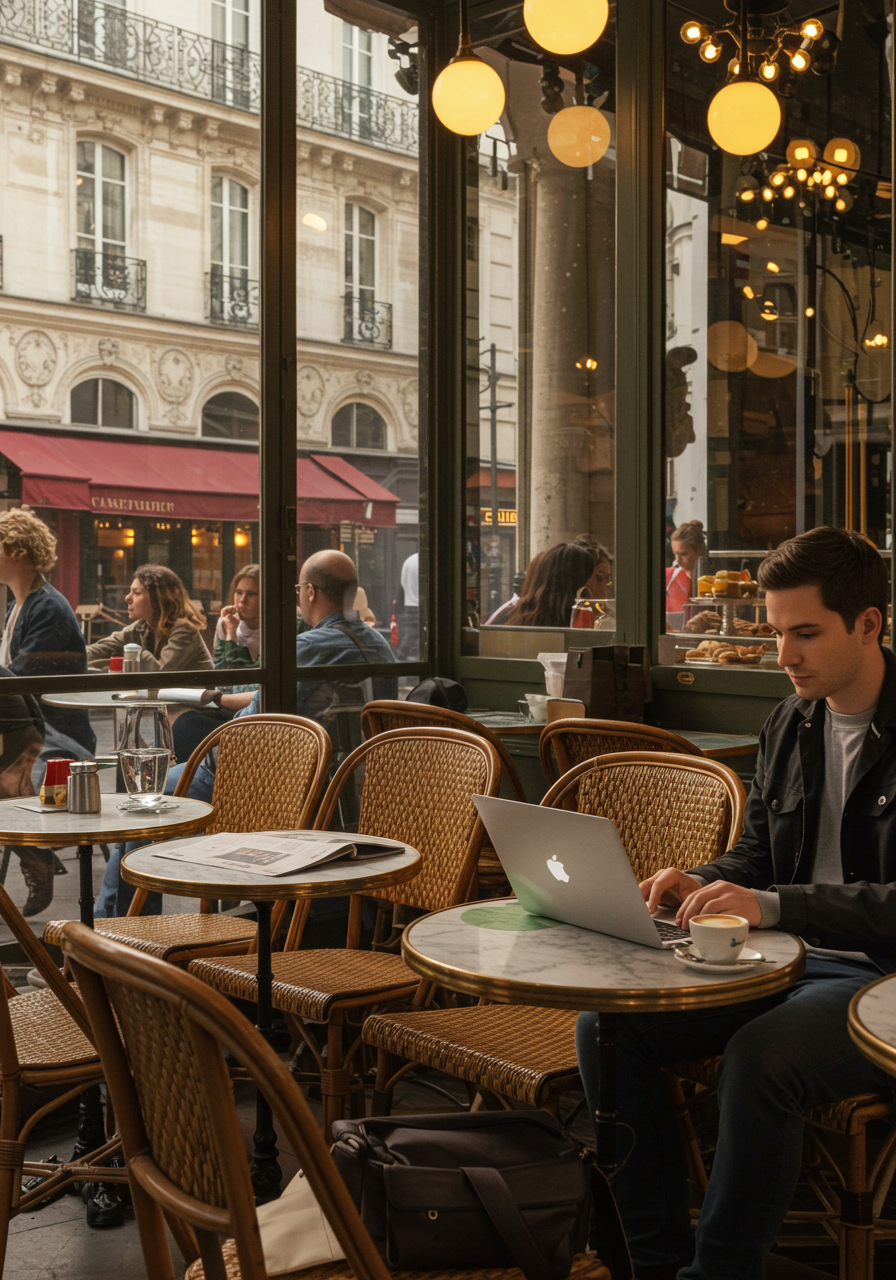Ever wondered how to navigate the City of Light without getting your phone snatched? Buckle up. This guide’s your backstage pass to Parisian street smarts, minus the awkward tourist moments that make locals roll their eyes so hard they can see the Eiffel Tower from the inside.
After seven years of bouncing between arrondissements and collecting more safety wisdom than Metro ticket stubs, I’m spilling all my secrets. Consider this your unofficial safety briefing from someone who’s made every rookie mistake so you don’t have to.
Parisian Pickpocket Paradise: Survival Tactics

Let me paint you a scene: There I was, confidently strolling through Montmartre, camera dangling carelessly from my wrist, tourist map practically taped to my forehead. The perfect target. A smooth-talking “bracelet artist” approached with a smile, and before I knew it, I was 20 euros lighter with a friendship bracelet I never asked for.
Pickpockets in Paris are basically performance artists with MBA-level efficiency. They’re particularly active around:
- Eiffel Tower base (especially the queue)
- Louvre entrance
- Sacré-Cœur steps
- Line 1 Metro (the tourist express)
- Any place you’ve lowered your guard because “it’s just so pretty!”
The Anti-Scam Arsenal:
- Keep valuables in front-facing crossbody bags
- Use dummy wallets with expired cards and minimal cash
- Be suspicious of random “gold ring” discoveries
- Perfect your “don’t mess with me” walk
- Learn to say “Non, merci” without even breaking stride
Travel Hack: Download the “Paris Safe” app – it’s the official city security app with real-time alerts and emergency contacts. Worth the phone space, trust me.
For the safety-conscious traveler, I swear by the Pacsafe Metrosafe crossbody bag. It’s slash-proof, has RFID protection, and doesn’t scream “I’M A TOURIST” like those awkward under-clothing money belts that make you look like you’re smuggling baguettes.
Metro Mayhem: Underground Navigation for Beginners
My personal nightmare scenario unfolded at Châtelet-Les Halles station (aka the ninth circle of transit hell) when I confidently boarded the wrong direction train and ended up in a sketchy suburb at midnight. Classic rookie move.

The Paris Metro is generally safe but requires street smarts:
- Line 1 (yellow) and Line 4 (purple): Pickpocket central
- Keep your phone OFF display on platforms
- Hold bags in front of you on crowded trains
- Never sleep on late-night RER trains
- Always validate your ticket (€35 fine if you forget)
The Metro Safety Playbook:
- Avoid empty cars late at night
- Stand near other women/families
- Memorize your route before pulling out your phone
- Keep small change accessible for quick ticket purchases
- Master the art of the confident stride even when completely lost
Travel Hack: The Paris Metro has finally rolled out contactless payment in 2025! Just tap your credit card to enter – no more fumbling with tiny tickets that disappear into the dimension of lost socks.
For hassle-free Metro navigation, the Citymapper app has literally saved my Parisian adventures more times than I can count. It works offline and shows real-time disruptions, which happen with the frequency and predictability of French worker strikes (which is to say, OFTEN).
Neighborhood Know-How: Where to Stay (and Where to Avoid)
After nearly setting up shop in what turned out to be Paris’s, um, “atmospheric” red-light district (hello, Pigalle after dark!), I’ve learned a thing or two about neighborhood selection.
Safety Tier List – From “Chef’s Kiss” to “Maybe Not”:

God Tier Safety:
- 6th Arrondissement (Saint-Germain)
- 7th Arrondissement (Eiffel Tower area)
- 4th Arrondissement (Le Marais – also LGBTQ+ friendly)
- 15th Arrondissement (local, residential vibes)
Perfectly Fine With Common Sense:
- 5th Arrondissement (Latin Quarter)
- 11th Arrondissement (hip, young energy)
- 3rd Arrondissement (Upper Marais)
- 14th Arrondissement (authentic Parisian life)
Exercise Caution, Especially at Night:
- Parts of the 18th (Montmartre has both postcard spots AND sketchy corners)
- 19th Arrondissement (beautiful parks, rougher edges)
- 10th Arrondissement (around Gare du Nord/Gare de l’Est)
- Northern parts of the 9th Arrondissement
Travel Hack: The 2nd Arrondissement has recently become my safety sweet spot – central location, fewer tourists than Le Marais, amazing food scene, and well-connected by Metro.
Solo Female Traveler Edition: Extra Precautions
The “Mademoiselle, you are so beautiful” brigade nearly drove me to madness my first month in Paris. Let’s talk real strategies for women traveling alone in the city of “love” (read: sometimes aggressive compliments).

The Solo Female Arsenal:
- Wear a fake wedding ring (sad but effective)
- Master the art of RBF (Resting Bored Face)
- Headphones in, volume off (awareness > music)
- “Je ne parle pas français” while walking away
- Sunglasses: the ultimate eye-contact blocker
Best Neighborhoods for Solo Female Travelers:
- Le Marais (4th) – bustling day and night
- Saint-Germain (6th) – well-lit and populated
- Canal Saint-Martin (10th) – during daylight hours
- Anywhere with “village” vibes like Montmartre (during the day)
Travel Hack: Women-only rideshare options have finally come to Paris in 2025! “FemmeRoute” allows female travelers to request female drivers for added peace of mind during late-night trips.
For additional peace of mind, I never travel Paris without my compact personal alarm keychain. It’s tiny enough to fit on your keyring but emits a 140-decibel siren when activated. Nothing disrupts unwanted attention faster than ear-piercing noise (and suddenly, everyone’s looking at your harasser, not you).
Emergency Protocols: When Things Go Sideways
Nothing ruins a dreamy Paris getaway like a medical emergency – especially if you don’t know how to get help. During my last trip, a friend took a tumble down the slippery Sacré-Cœur steps and needed stitches. Watching her navigate French emergency care taught me valuable lessons.
Must-Save Numbers:
- General Emergency: 112 (operators speak English)
- Police: 17
- Ambulance: 15
- Fire Brigade: 18
- Non-emergency medical: 116 117
- SOS Médecins: 01 47 07 77 77 (house calls!)
The Paperwork Survival Guide:
- Store digital copies of your passport in encrypted cloud storage
- Carry a physical photocopy separate from the original
- Keep insurance documents in both digital and physical form
- Save the address and phone number of your country’s embassy
- Take photos of prescriptions using their generic drug names
Travel Hack: Paris hospitals divide into public (APHP) and private. For tourists, private hospitals often have more English speakers but higher costs. Hotel-Dieu hospital right by Notre Dame is both public AND used to tourists.
Digital Safety: Staying Connected Without Getting Hacked
That time I connected to “Free_Paris_WiFi” at a café and suddenly my Instagram was posting suspicious cryptocurrency ads? Yeah, not my finest tech moment.

The Digital Defense Strategy:
- Use a VPN on all public WiFi (non-negotiable)
- Download offline Google Maps before arrival
- Stick to official Paris WiFi spots (look for “Paris WiFi” with the city logo)
- Consider a French SIM card (cheap at any tabac shop)
- Enable all two-factor authentication before traveling
Apps That Save Parisian Bacon:
- Citymapper (superior to Google Maps for Paris)
- Uber (safer than random taxis, especially at night)
- Doctolib (medical appointments in English)
- The Fork (safer restaurant reservations)
- Métro Paris (works offline for subway navigation)
Travel Hack: The French government finally launched their official “Paris Secure” WiFi verification system in late 2024. Look for the blue verification badge on WiFi networks at official sites, museums, and government buildings.
For stress-free connectivity with privacy protection, I never travel without my portable VPN device. It creates a secure connection for up to five devices simultaneously and doesn’t rely on installing apps – perfect when you’re juggling multiple devices or traveling with tech-challenged companions.
The Final Word on Parisian Safety
Here’s the unfiltered truth – Paris is generally safe for travelers who keep their wits about them. The biggest issues you’ll face are petty theft and scams, not violent crime. Most Parisians are decent humans who won’t hesitate to help if you’re in genuine trouble.
The city has notably improved its security presence since 2024, with increased police patrols in major tourist areas and better surveillance systems. Those intimidating military personnel with large guns? They’re actually reassuring once you get used to them.
Learn ten French phrases, respect local customs, keep your phone secured, and you’ll navigate Paris like a pro. So go ahead – indulge in that extra glass of Bordeaux, get gloriously lost in hidden passages, and take a thousand photos of perfect croissants. Just keep these safety tips in your back pocket (your securely zipped back pocket, that is).
Bon voyage and stay safe out there, my fellow Paris-loving friends!
Note: This article contains carefully selected affiliate links. I only recommend products I’ve personally tested and loved during my Paris adventures. If you purchase through these links, I earn a small commission at no extra cost to you – which helps fund my croissant addiction and keeps this blog running!
